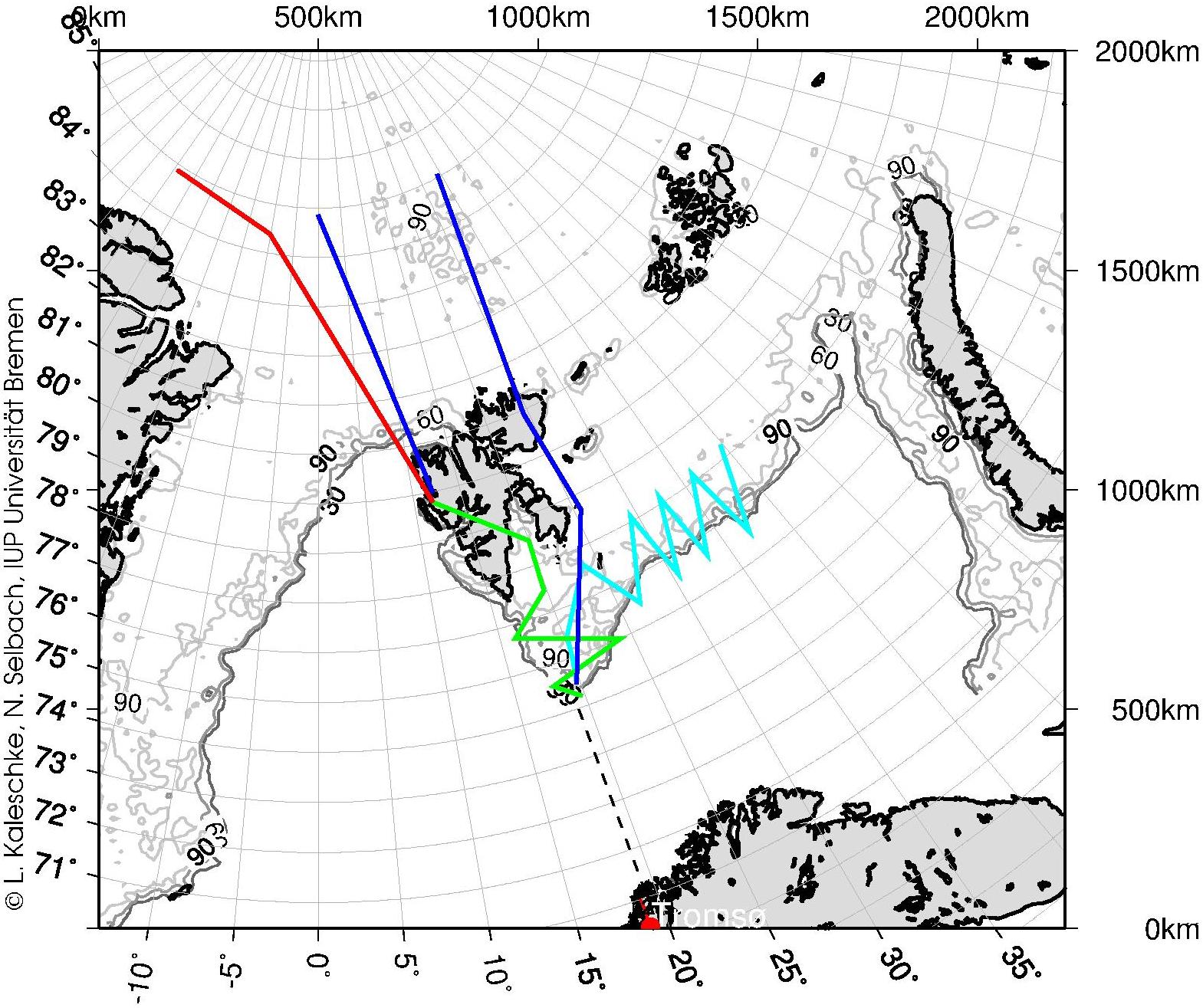Polar Atmospheres and Clouds
Remote Sensing of Total
Water Vapor (TWV) in polar regions
Georg Heygster, Nathalie Selbach*
Funding: University of Bremen
Recently, an algorithm was developed by Miao et al., 2001 to retrieve Total Water Vapor (TWV) amounts using measurements from the SSM/T2 sensor operated on the DMSP satellite over the Antarctic. This exploited the fact that surface emissivity is expected to be the same for the three channels centred on the 183.31 GHz water vapor absorption line to isolate the atmospheric absorption. The algorithm uses the ratio of brightness temperature differences. The algorithm is independent of surface conditions such as surface emissivity and temperature if the emissivity is the same for the used channels. However, the application of this algorithm was limited to very dry atmospheres, with TWV less than 1.5 k g/m2 , as above this value the 183±1 GHz channel becomes saturated. To extend its range, Miao was forced to use the 150 GHz channel of the SSM/T2, assuming the emissivity to be the same as at 183 GHz. Depending on TWV the three channels at 183.31 GHz or the 150 GHz channel in combination with the channels at 183±3 GHz and 183±7GHz is used.
Data from the airborne SEPOR*-POLEX campaign (Surface
Emissivitites in POLar Regions - POL ar EX
periment) has been used to validate these algorithms. This experiment,
which took place during three weeks in March 2001, is a cooperation of
the Institute of Environmental Physics, University of Bremen and the Met
Office, UK. A microwave radiometer (MARSS) with channels close to
those of SSM/T2 was operated on the Met Office C-130 aircraft. Five
flights of up to 10 hours duration were performed over various ice types
in the Arctic, including glacier, new, first and multi-year ice (Fig. 1).
Each flight consisted of a long low level run (typical height ~ 150 - 600
m above ground) over the ice to measure its emissivity, a profile ascent
and run back to the base (Tromsø, Norway) at high level (typical
height ~ 9 km). Dropsondes were released from the aircraft at 100km
intervals during the high level runs to provide atmospheric profiles used
for the validation of the retrievals. Two flights concentrated on the marginal
ice zone, the three remaining flights extended to about 85° N
and different longitudes.

Fig. 1: Flight tracks superimposed on the sea ice concentration derived
from SSM/I data from March 23rd, 2001.
Isolines of the ice concentration (30%, 60%, 90%) are given in addition.
Miao's algorithm using only the 183 GHz channels accurately retrieved TWV values up to 2 kg/m2 over a range of surface types. The retrievals became more noisier in more humid atmospheres, especially in the presence of cloud. The coefficients of the second algorithm have been modified to account for the fact that this radiometer has a channel at 157 GHz, instead of the 150 GHz channel of the SSM/T2. In general, there is a good agreement with TWV derived from dropsondes using the 183 GHz data only. Assuming the emissivity at 157 GHz and 183 Ghz to be the same leads to a systematic overestimation of TWV if the 157 GHz data is used in combination with measurements at 183 GHz. The difference in emissivity between 157 GHz and 183 GHz is larger over open water than over the sea ice and therefore the error in TWV using the lower frequencies is larger in these regions. The high surface emissivity in regions of new ice leads to errors in the retrieval as a result of the strong influence of the surface.
Accounting for the frequency dependence of emissivity is important to improve the retrieval of TWV in polar regions. This will follow an examination of emissivity from low-level runs of the SEPOR-POLEX experiment.
The algorithm developed by Miao, 2001, is limited to TWV values less
than 6 kg/m2. This range
is not sufficient to cover the ice and snow covered polar regions. An extension
of the range of the TWV algorithm by including the 89 GHz channel with
a lower sensitivity to water vapor may be possible. This will require a
further consideration of Arctic surface emissivity spectra. Measurements
at this frequency and also some data at 24 and 50 GHz to derive this parameter
are available from this campaign.
Selbach, N., T. J. Hewison,
G. Heygster, J. Miao, A. J. McGrath and J. P. Taylor, submitted Dec 2001:
Validation of total water vapor retrieval with an airborne millimeter-wave
radiometer over Arctic sea ice.
submitted to Special Issue of Radio Science associated with the Specialist
Meeting on Microwave Remote Sensing 2001
* SEPOR was funded under the Framework Programme V - Improving the Human Research Potential and Socio Economic Knowledge Base under the Transnational Access to major Research Infrastructures from the CAATER programme, contract no. HPRI-CT-1999-00095.
Inhalt: